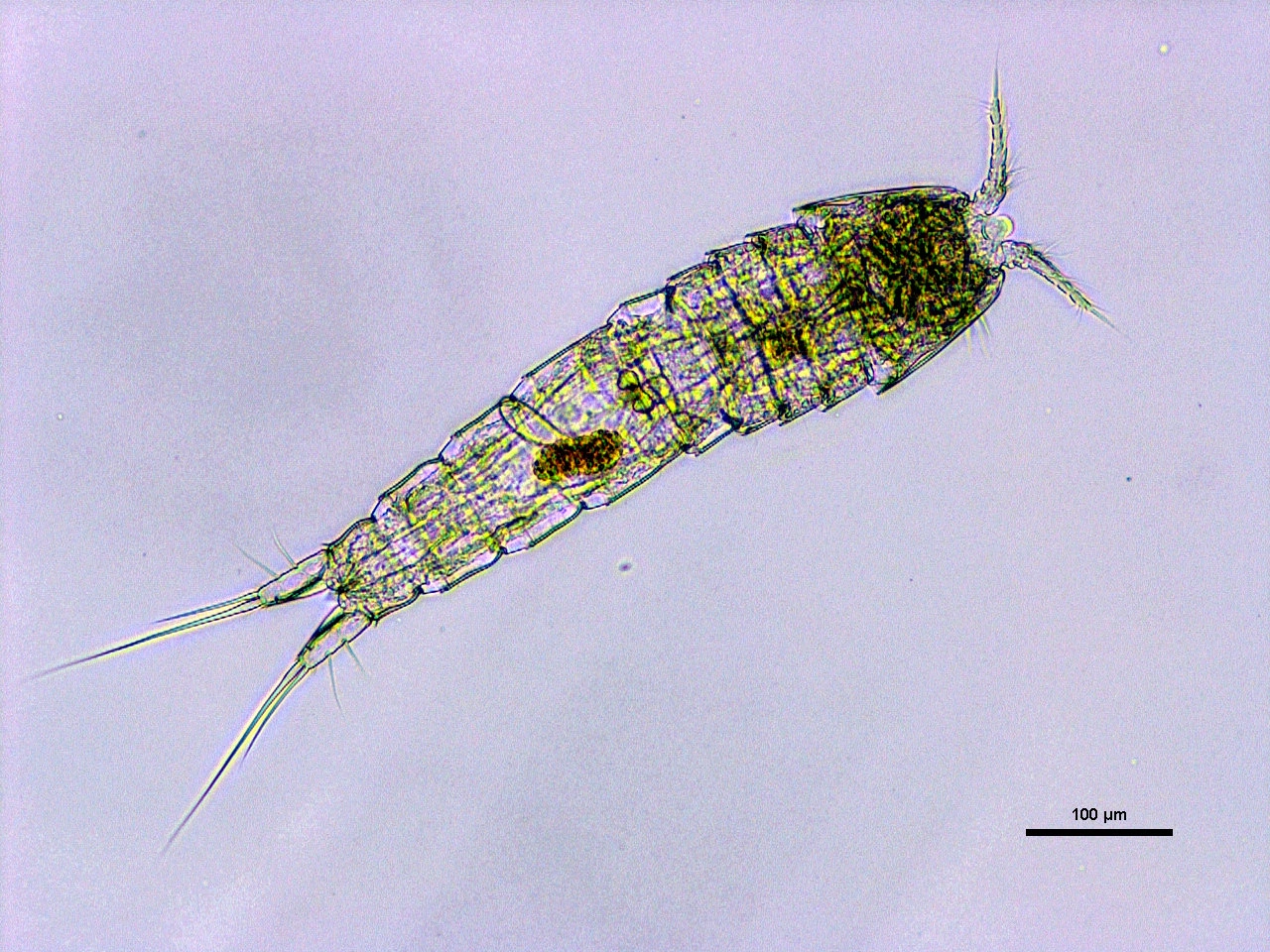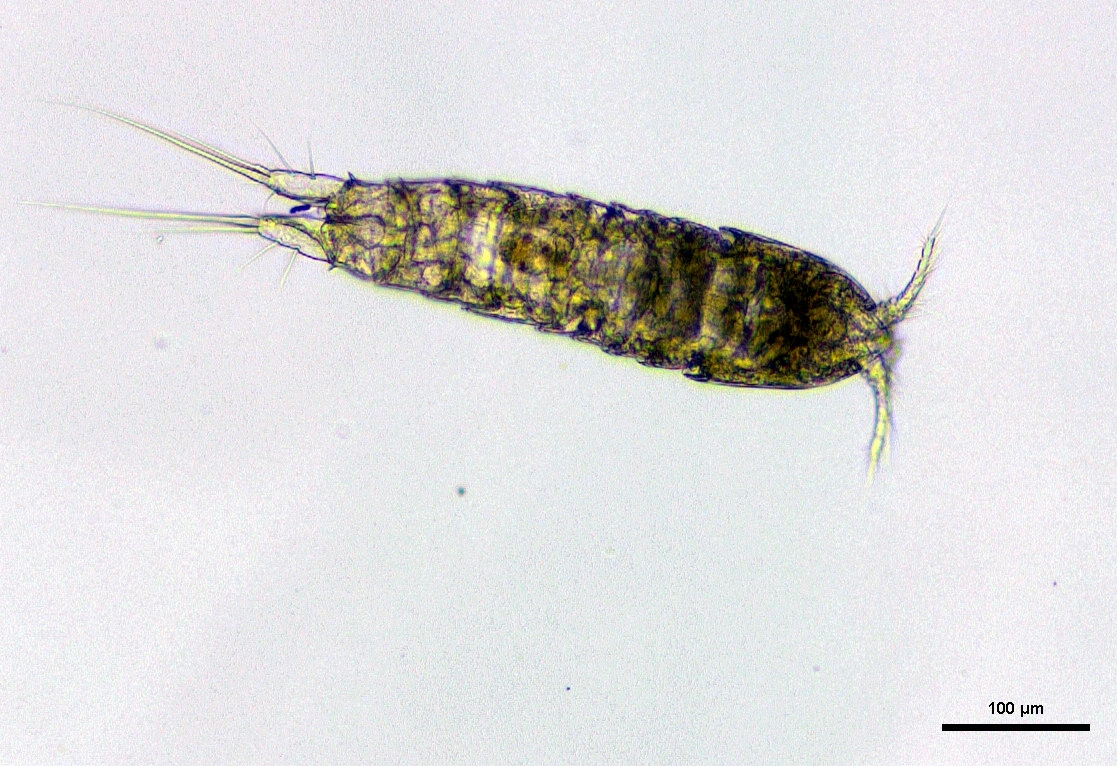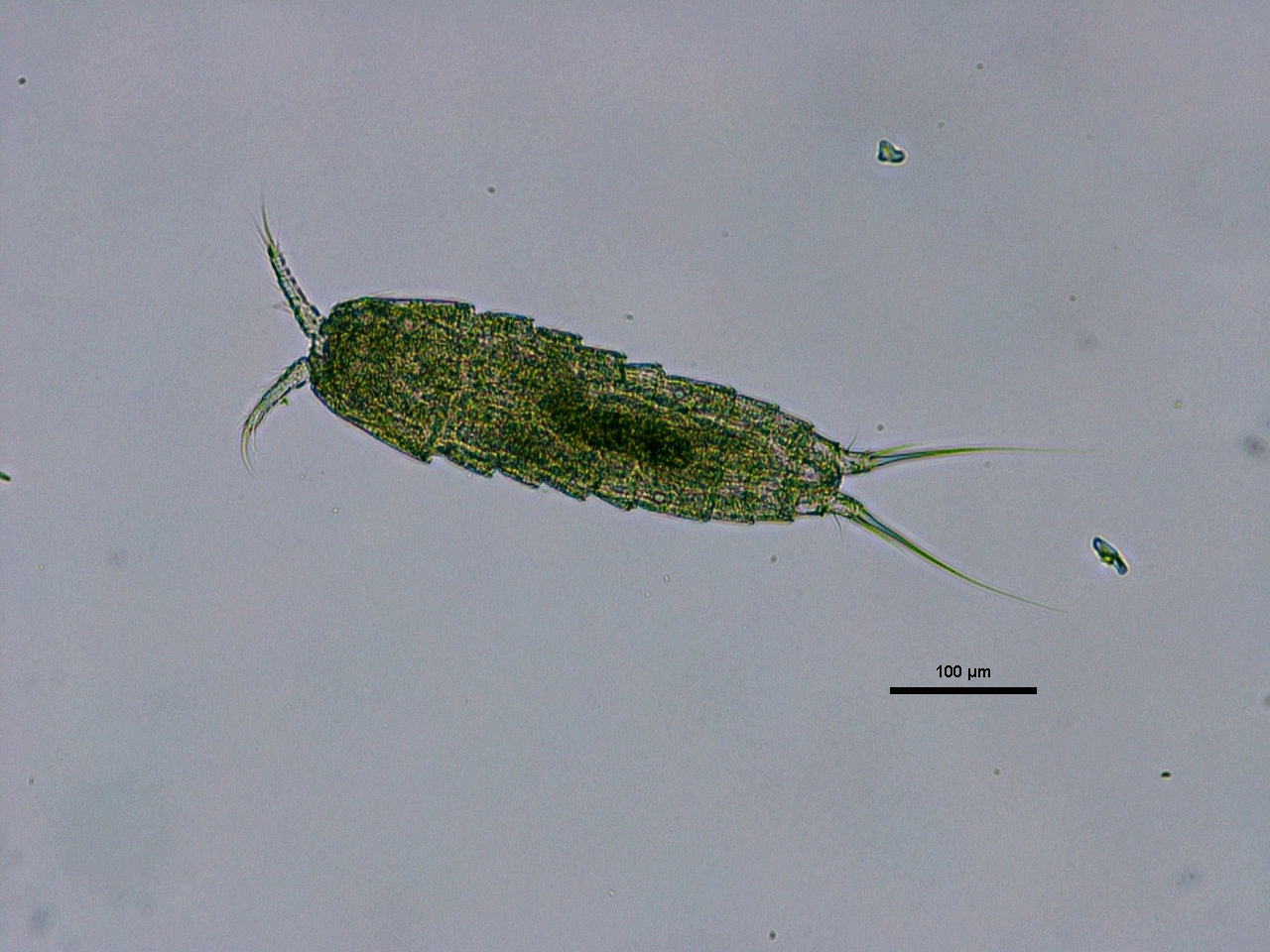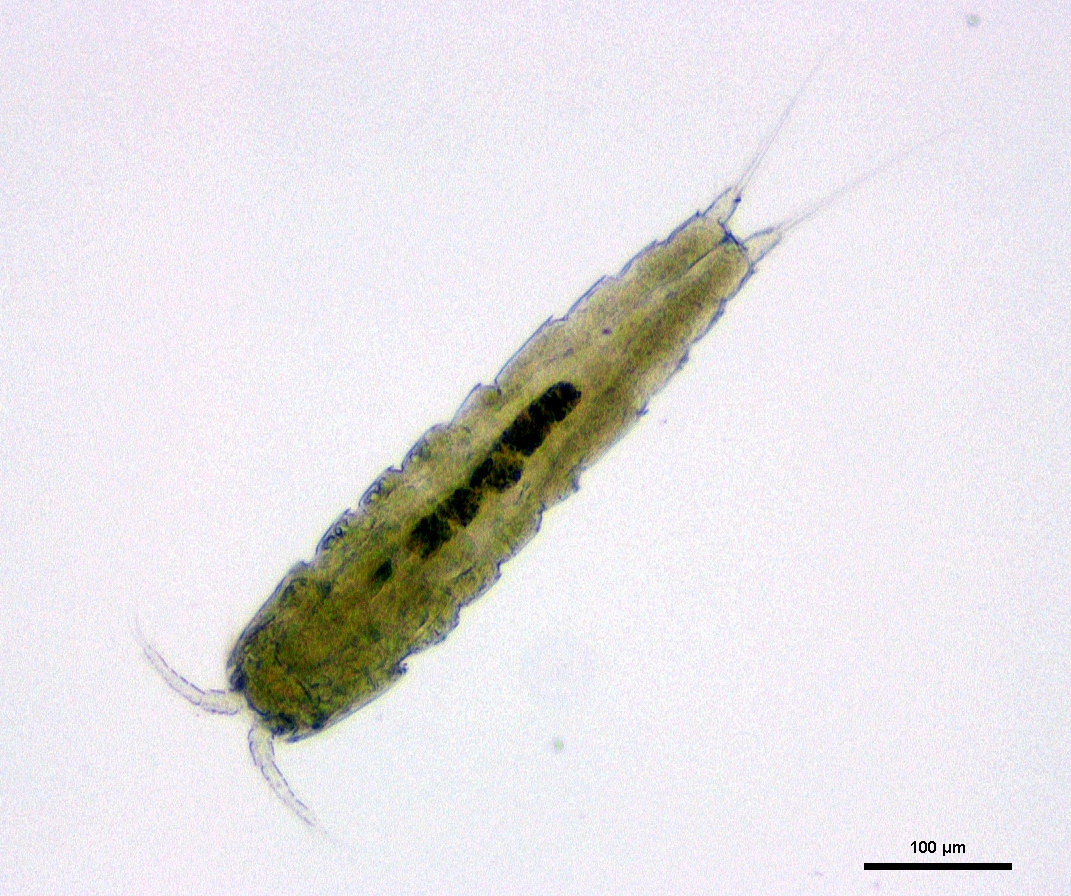Moraria brevipes
Moraria brevipes is the most common of all freshwater harpacticoids in Norway. It is found throughout the country, however not in the Svalbard Archipelago.
Key characteristics
Moraria brevipes has a body which is slender and cylindrical and with rather short legs. The exopod in the first four legs has three segments, while the endopod is 2-segmented. The endopod in the first leg is slightly shorter than the exopod, while it is considerably shorter in the legs 2–4. The fifth leg is large, with short, blunt and thick spines and with a short setae. Its rostrum is large and broad. The operculum is large, pointed and smooth, having a triangular shape (in copepodites operculum has a margin, which is toothed). The caudal ramus is rather large, approximately twice as long as wide, and with no armour on the inside. The antennule is short, and consists of seven segments.
Female: Length 0.43–0.62 mm
Male: Length 0.43–0.57 mm
Ecology and distribution
About 65 % of the records of M. brevipes are from lakes and 20 % from ponds. It is also found in streams, rock pools, rivers, caves and leaf litter habitats. Of all records, 12 % was directly associated with mosses. It is a cold stenotherm species having a Palearctic distribution, and is an indicator for acidic conditions, being most common at low pH.





